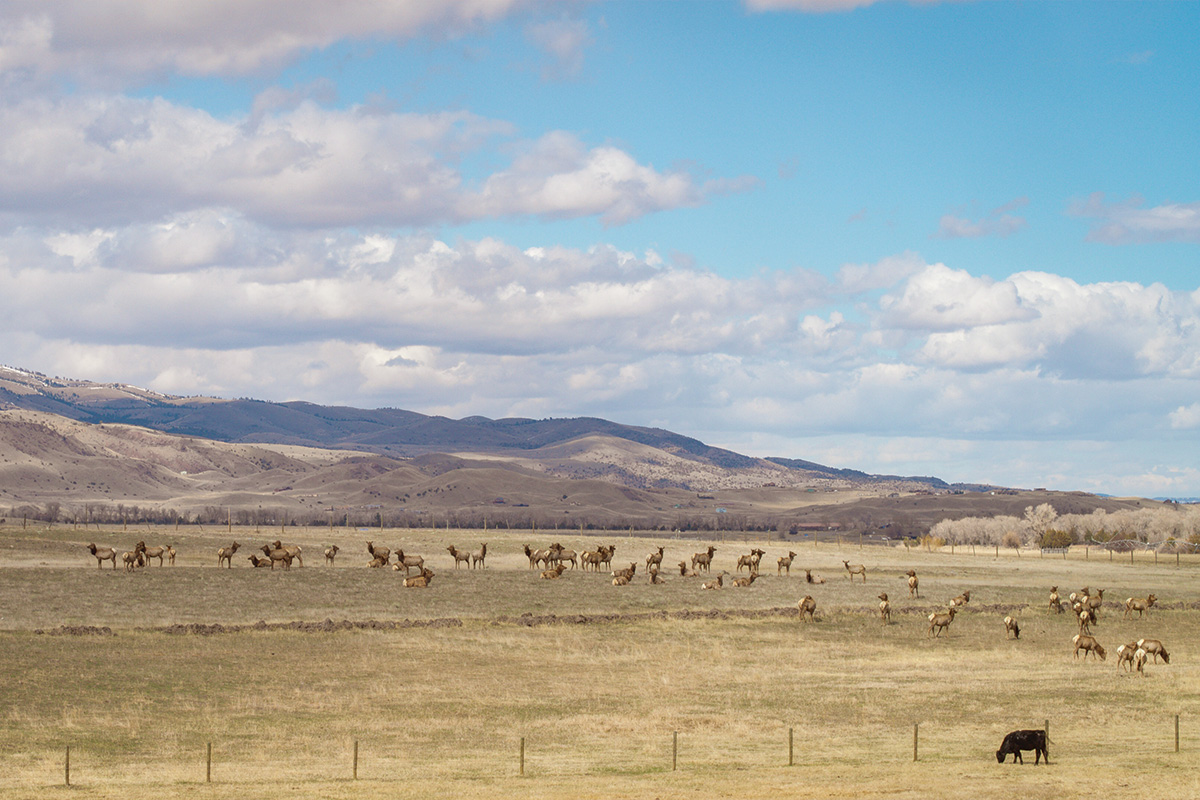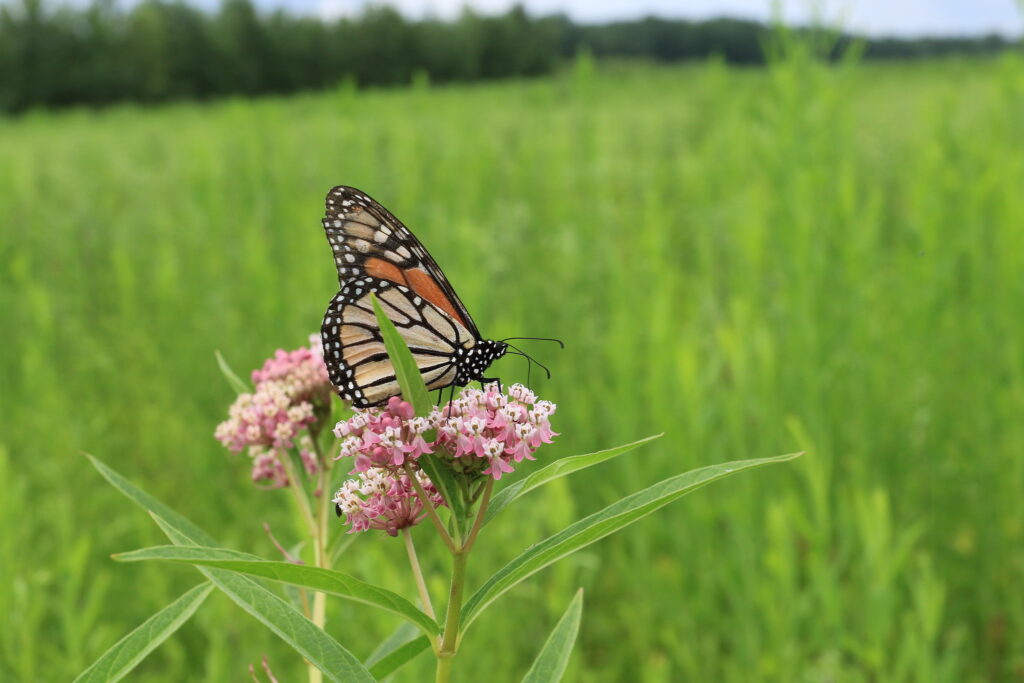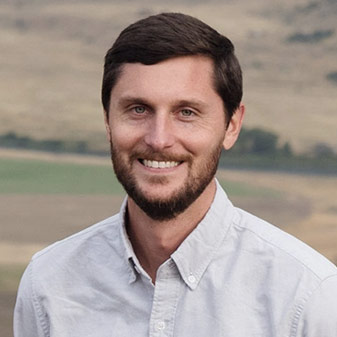When Terry Anderson and Donald Leal published the first edition of their book Free Market Environmentalism in 1991, the idea was met with mixed reviews. “Free market environmentalism is an oxymoron,” wrote one reviewer, “and the authors are the moron part.”
The dominant belief at the time was that markets are the cause of environmental degradation, not the solution. And the idea that property rights could be harnessed to improve environmental quality was counter to the popular notion that conserving natural landscapes required regulation and management by government agencies.
But not anymore. Today, the ideas of free market environmentalism are being applied in a variety of creative ways. Conservationists are increasingly using markets, contracts, and property rights to turn environmental resources into assets instead of liabilities. And policymakers are recognizing that markets are not the enemy of the environment but instead can provide strong incentives for resource stewardship.
So how are these ideas being applied today to change the way people approach conservation? Here are a few examples.
Markets and property rights are solving the tragedy of the commons in marine fisheries …
Ocean fisheries are a classic example of the tragedy of the commons. Since no one owns the ocean, no one has a clear incentive to conserve its resources, making the oceans prone to overfishing.
For decades, governments have imposed command-and-control regulations to combat overfishing, but such restrictions have rarely worked. Shortened seasons and early closures created a dangerous, zero-sum “race to fish.” The outcome was a wasteful—and often deadly—derby that was bad for both fish and fishermen, who tried to catch as much as possible before the closures set in. Despite these regulations, overfishing persisted, and many fish stocks were at risk of collapsing.
That changed with the development of a rights-based alternative known as individual transferable quotas, sometimes called “catch shares.” The quotas give fishermen the right to catch a share of a total catch limit, set at a sustainable level each season by fishery managers. Fishermen can buy, sell, or lease quotas to each other, and they no longer have to race to fish. There is also more accountability for harvests and an incentive for stewardship.
The results have been impressive. Rights-based fishing reforms have reduced overfishing, helped stem the global trend toward fisheries collapse, and led to higher incomes for fishers. According to one study that examined data on more than 11,000 fisheries around the world, catch shares have helped halt and even reverse the collapse of fisheries. They have also slowed the “race to fish,” improving fishing safety and allowing consumers to buy fresh seafood throughout the year. Today, there are nearly 200 catch-share programs worldwide, including more than a dozen in the United States.
Catch shares are also being used to reduce “bycatch,” which are species that fishermen unintentionally catch in their trawlers. After previous efforts to regulate bycatch failed, managers of a fishery off the West Coast of the United States demonstrated how markets and property rights can help tackle the problem.
In 2011, the West Coast groundfish fishery instituted a program that gave each fisherman a portfolio of rights to catch various species, including those caught as bycatch. If a fisherman exceeded his allotment for a given type of fish, he had to purchase more quota—and when it came to overfished species, the price was steep. This gave each vessel in the fleet ample incentive to avoid overfished species that previously ended up as bycatch, a crucial aspect of the program that former regulations on fishing seasons lacked.
After catch shares were introduced, the proportion of overfished species caught by trawlers fell by about half. “Before catch shares, large proportions of the catch of many non-target species were discarded as bycatch,” reads a 2015 government report. “Now, whether in a fishing net or in the ocean, they are treated as the valuable resource they are.” As a result, populations of overfished species have begun to rebound thanks to clearly defined property rights and markets that overcome the tragedy of the commons.
… and helping cooperatively resolve conflicts over the use of scarce water resources.
Dwindling streams throughout the American West threaten fish and wildlife habitat and recreation opportunities. As development expands and water becomes scarcer, the challenge is to protect instream flows while still meeting growing demand for out-of-stream uses that are critical to local economies. Often, the result is legal and political conflict over water allocation.
Water markets are one solution to resolve such disputes. Where water rights are clearly defined, enforceable, and transferable, markets provide a viable alternative to legal or political fighting over water. By allowing users to capture gains from trade, markets can encourage conservation practices and mutually beneficial water transfers.
Water markets connect willing buyers and sellers of water rights to resolve competing demands for a variety of uses, including to enhance stream flows for recreation and improve habitat for fish and wildlife. Thanks to state-level reforms in recent decades, water rights can now be bought, leased, or donated for environmental purposes throughout much of the West—meaning that conflicting demands over water can be resolved cooperatively through market exchange, rather than fought over in political or legal battles.
That wasn’t always the case. The prior appropriation doctrine, which governs how water rights are allocated in the western United States, requires that water must be put to a “beneficial use,” which has typically meant diverting it for agriculture, mining, or municipalities. Such requirements made it difficult for water rights holders to leave water instream without losing their rights and also prohibited transfers for conservation purposes.
Today, however, many western states have begun to recognize instream flows as a beneficial use and allow voluntary trading of water rights to improve flows—although each state varies in the degree to which such trades are allowed. Nevertheless, these changes have paved the way for conservationists to pursue a free-market approach to restoring streams through market exchange.
In California, the nonprofit Scott River Water Trust pays farmers not to divert water during certain low-flow periods to protect salmon and steelhead. In Montana, Trout Unlimited has negotiated water leases with farmers and ranchers to protect native fish populations while maintaining viable agricultural operations. And in Oregon, the Freshwater Trust—formerly the Oregon Water Trust—has contracted with more than 200 landowners to restore streamflows using a variety of creative strategies, including permanent water-right acquisitions and short-term leases.
Still, in many states, regulations and other legal and political barriers hinder more widespread use of water markets. In 2019, for instance, the Audubon Society completed the first-ever lease of an agricultural water right in New Mexico for instream-flow purposes, a process that took several years to finalize. Now, it provides a blueprint for similar transactions in the state, which other groups, including Trout Unlimited, are pursuing. While obstacles remain, water markets are proving they can encourage competing users to cooperate rather than fight, promote conservation, and help alleviate the economic and environmental effects of water scarcity now and in the future.
There is growing recognition that private lands play an important role in providing public conservation benefits.
Private lands play an important but often-overlooked role in sustaining many of the public environmental benefits we cherish, whether they’re healthy wildlife populations, clean water, or open spaces. The ways these public resources are connected to private lands, however, are not always obvious.
Consider a few examples. In the Greater Yellowstone region, recent research has revealed the extent to which publicly managed elk, deer, and other species use private lands for habitat—particularly large ranches and farms. Using GPS collars, scientists have found that Yellowstone’s elk herds spend nearly half of their time on private lands, relying almost entirely on lower-elevation ranches during the harsh winter months.
This research underscores a crucial fact: The elk and other migratory ungulates that attract millions of visitors to the region each year—and fill many hunters’ freezers each fall—depend on the actions of private landowners for survival. “If you’re a tourist that sees elk in Yellowstone, there’s a good chance those elk rely on someone’s private property for habitat in the winter,” says Arthur Middleton, a U.C. Berkeley ecologist who studies Yellowstone’s elk migrations.
All across the United States, private landowners provide habitat for other game and non-game species. Altogether, private lands are home to more than 75 percent of the nation’s wetlands and more than 80 percent of its grasslands. Two-thirds of all threatened and endangered species are also found on private land.
These examples illustrate an important reality that is gaining broader recognition: Conservation benefits the public, but landowners often bear the costs of providing it—whether it’s the direct losses associated with living with wildlife such as lost forage, damaged crops, or disease transmission or the indirect costs in terms of other foregone productive uses of their land. When these costs are high, landowners’ willingness and ability to continue providing those public benefits can be diminished.
The famous conservationist Aldo Leopold understood this well. In 1934, he wrote that “the thing to be encouraged is the use of private land in such a way as to combine the public and the private interest to the greatest degree possible.”
Today, many conservationists are following Leopold’s advice by working with private landowners to find solutions that benefit both people and wildlife. In Montana, PERC is exploring ways to help cattle ranchers in the Greater Yellowstone Ecosystem address the problem of brucellosis, a disease that elk transmit to livestock that causes them to abort their young. The project aims to develop an insurance mechanism to better manage the financial risks associated with brucellosis, which can be devastating for ranchers and undermine their support for conservation efforts. The tool would transfer some of the risks of elk-to-livestock brucellosis transmission to other parties willing to bear some of the costs, including conservation organizations, sportsmen groups, and conservation-minded investors.
PERC is also working with landowners in Montana’s Paradise Valley to devise market-based solutions that better enable them to provide habitat for elk, deer, and other species. The project is exploring the feasibility of several innovative tools, including short-term elk occupancy agreements and forage-loss compensation programs. Other partners, including the Western Landowners Alliance and an interdisciplinary group of researchers from PERC and several universities, are collaborating to develop new approaches and policy solutions that help private landowners conserve habitat for elk and other migratory ungulates.
Such efforts can’t come soon enough. Pressures to develop and subdivide large private working lands loom large in the region. And as wildlife populations such as elk and grizzlies continue to expand, landowners are being asked to shoulder even greater burdens. Disease risks from brucellosis are also increasing. New solutions that help private landowners are needed.
“Conservation,” Leopold wrote, “will ultimately boil down to rewarding the private landowner who conserves the public interest.” With 70 percent of the United States privately owned, conservation needs to make economic sense for landowners, and fortunately, property rights and markets are helping to get those incentives right.
Creative conservationists are harnessing markets to provide habitat for wildlife.
Ask any ecologist and they will tell you that, when it comes to conserving wildlife, habitat is the crucial ingredient. Increasingly, conservationists are finding innovative ways to restore or create habitat—not by litigating or regulating land use, but sometimes by simply paying people to provide it.
After years of drought began to take its toll on wetlands habitat in California’s Central Valley, the Nature Conservancy devised a creative approach to do just that. The group established a program to pay rice farmers to keep their fields flooded longer than usual to serve as habitat for waterfowl migrating along the Pacific Flyway, a 4,000-mile route from the Bering Strait to Patagonia. Rice farmers in the valley usually drain their fields in January, several months before birds arrive on their annual migration, but a dry field is of little use to migratory geese or other waterfowl.
The program, dubbed BirdReturns, creates temporary “pop-up” wetlands to ensure migrating flocks have habitat during a crucial part of their journey. “If birds come here and there aren’t any flooded fields, they may not have enough habitat to survive,” said Brian Stranko, director of the Nature Conservancy’s water program. “But if we pay farmers to flood their fields when the birds want to be here, then we can create the habitat that these birds need.” Since the program began in 2014, more than 100 farmers have participated to create 50,000 acres of short-term habitat.
Elsewhere, other groups are finding creative ways to contract for conservation. In Montana, the Wild Sky program run by the nonprofit American Prairie Reserve makes direct payments to ranchers who implement wildlife-friendly practices that foster habitat for elk, pronghorn, bears, and other species. “Many ranchers are already doing conservation work, but very few are actually getting compensated for it,” says Daniel Kinka, a wildlife ecologist with Wild Sky. “We think that by paying people for the conservation work they are already doing, they are more likely to continue to do that work and are more likely to find new and better ways to do conservation in the future.”
Other examples abound. The Vermont Audubon Society has developed a bird-friendly label that maple syrup producers can use to market their products in exchange for diversifying their forests to enhance bird habitat. The National Wildlife Federation negotiates grazing-permit buyouts in the Yellowstone region to reduce conflicts with carnivores such as grizzly bears and wolves and limit the spread of disease from domestic sheep to wild bighorn sheep herds. And in Uganda, conservationists have paid farmers to keep forests intact to preserve habitat for endangered chimpanzees and sequester carbon dioxide, which has proven to be a cost-effective way to combat deforestation in the country.
Regulations often harm, rather than help, endangered species recovery—but that’s beginning to change.
Most endangered species rely at least in part on private lands for habitat. Yet under the Endangered Species Act, landowners who provide habitat for listed species generally receive no benefit—in fact, the presence of endangered species may even become a liability. As a former Fish and Wildlife Service administrator once noted, “The incentives are wrong here. If I have a rare metal on my property, its value goes up. But if a rare bird occupies the land, its value disappears.”
The red-cockaded woodpecker provides a classic example. After the species was listed as endangered in 1970, several studies found that timber owners in North Carolina began harvesting trees earlier, or even clear-cutting forests entirely, to avoid the costly land-use restrictions that would arise if woodpeckers began to inhabit their land. Rather than encouraging landowners to provide much-needed habitat, the law encouraged them to preemptively destroy it.
These backward incentives present major obstacles for recovering species—and the results show it. Since the Endangered Species Act was enacted, less than 3 percent of listed species have recovered to the point of being delisted.
In recent decades, conservation groups, landowners, and policymakers have sought to improve the implementation of the act to address these perverse incentives. Various policy tools such as safe harbor agreements, candidate conservation agreements, and habitat credit trading programs have been created in an attempt to provide incentives that promote species recovery instead of undermining it. Safe harbor and candidate conservation agreements provide regulatory relief for landowners who conserve or recover imperiled species. Credit trading schemes provide incentives for property owners to supply habitat; their conservation work generates credits, which can be sold to developers who have agreed to buy credits to mitigate impacts of their projects.
Most recently, the Fish and Wildlife Service in 2019 adopted new rules that will allow the agency to tailor protections to match the needs of listed species. In particular, the rules would establish a regulatory distinction between species that are listed as endangered (those currently at risk of extinction) and those that are threatened (those that could become endangered in the foreseeable future).
This change could provide better incentives to recover species. Now, instead of applying the same strict regulations to both endangered and threatened species, the agency can craft flexible protections for threatened species that are suited to the particular recovery challenges of that species. For example, the agency can issue baseline protections that do not unduly restrict land-use activities that pose little threat to a species and can encourage management actions that improve habitat conditions. And because landowners can be rewarded with regulatory relief as a species’ status improves, or face increased regulatory burdens if its status declines, landowners will have a significant stake in species recovery.
The new rule may prove critical for the monarch butterfly, which is under consideration for federal listing later this year. The migratory butterfly’s main habitat requirement is milkweed—the monarch caterpillar’s only food source—but today the plant is in short supply due to increased herbicide use. As a result of this and other factors, monarch populations have drastically declined in recent decades.
Under the old rules, in which all listed species receive full protections by default, listing the butterfly under the Endangered Species Act would likely deter many landowners from helping recover the species. Its mere presence could trigger costly land-use restrictions, making it unlikely that farmers or ranchers would restore milkweed habitat.
The new rules would allow the Fish and Wildlife Service to tailor threatened-species protections for the monarch in a way that encourages efforts to conserve the butterfly. For instance, rules could be issued that allow landowners enrolled in a voluntary habitat conservation program to be exempt from certain regulations. In practice, that could mean that as long as a farmer makes good-faith efforts to maintain habitat that helps the butterfly, they would not be subject to restrictions or punishments for engaging in routine farming activities, even if they incidentally harmed a small portion of monarch habitat.
These policy tools are far from perfect—safe harbor agreements, for instance, are costly and time consuming for a landowner to hammer out with the government, and even then, an endangered species could still become a liability for neighbors once it crosses property boundaries—but the trend is clear: Conservationists are finding innovative ways to affect policy so that incentives can be more closely aligned for landowners and imperiled species.
Environmental entrepreneurs are finding ways to better define property rights and reduce transaction costs to address new challenges.
If property rights and markets are the keys to free market environmentalism, then environmental entrepreneurs are the people applying them to solve real-world problems. At PERC, we have our own word for them: “enviropreneurs.”
Simply put, enviropreneurs use property rights, contracts, and market incentives to improve the environment. They see environmental problems through a different lens. Where others see “market failures” and a need for regulation, enviropreneurs see opportunities to forge innovative contracts that define unclear property rights and reduce the transaction costs of coordinating exchanges. The result is a cooperative alternative to zero-sum political environmentalism.
Hank Fischer is a quintessential example. In the 1990s, while working with the nonprofit Defenders of Wildlife, Fischer helped reduce conflicts over the reintroduction of wolves to the Yellowstone ecosystem with a unique approach: Instead of pursuing regulation or litigation, he sought to compensate ranchers for the costs of living with wolves. His group raised money from wolf lovers to create a fund for reimbursing ranchers whose livestock were killed by wolves.
It was classic enviropreneurship. Rather than trying to take away ranchers’ grazing rights or questioning whether they should have the right to graze livestock in the region at all, Fischer asserted that ranchers had such rights and worked to compensate them for their losses. The scheme didn’t completely solve the controversy—wolves were still contentious, and remain so today—but his approach significantly defused the conflict.
“My view is that people who support wolf recovery should help pay the costs,” Fischer wrote in PERC Reports in 2001. “I’m trying to bridge the gap between people who may not want wolves and my organization, which is committed to wolf restoration.” Since then, similar approaches have been used to negotiate grazing permit retirements in areas with chronic wildlife conflicts and to help sheep ranchers convert their herds to cattle to reduce the spread of disease from domestic sheep to nearby wild bighorn sheep populations.
New technologies are also reducing the transaction costs of using environmental markets. The sharing economy, for example, is revolutionizing the way entrepreneurs connect suppliers and demanders to share underused assets, such as vehicles in the case of Uber and spare bedrooms in the case of Airbnb. The same principles are being harnessed to address conservation challenges.
LandTrust, a company based in Bozeman, Montana, is using an Airbnb-style marketplace to provide public hunting and other recreational opportunities on private lands—and, in the process, giving landowners incentives to conserve fish and wildlife habitat. Landowners can list their property, set prices, and establish rules for access. Hunters and anglers can then request daily bookings. Users are pre-verified, and dual rating systems build trust and ensure accountability.
Whether led by nonprofit groups or for-profit firms, enviropreneurs use property rights to promote conservation, sometimes even by creating new forms of property rights. Short-term habitat leases, fishing quotas, access agreements, livestock compensation schemes, conservation easements, and payments for ecosystem services are essentially enviropreneurial efforts to forge new property rights that lower the transaction costs of environmental markets—all while helping to protect species, preserve open spaces, or increase recreational opportunities.
Free market environmentalism is anything but an oxymoron
Far from being an oxymoron, free market environmentalism is working to end overfishing, increase stream flows, recover wildlife, and encourage resource stewardship—and the environmental community is beginning to recognize it. Today, market approaches are no longer taboo. As the examples above suggest, they are often the most practical way to resolve conflicting demands over natural resources and the environment.
Of course, markets and property rights are no silver bullet. They won’t solve every environmental problem. But for many issues, they offer a viable and attractive alternative to political environmentalism. And in cases where market solutions don’t emerge, it’s often because political or legal obstacles prevent them from flourishing—whether through unclear rights or restrictions on market exchanges. When property rights can be defined and secured and markets can function, free market environmentalism can thrive.
Free market environmentalism is a proven concept that is promoting conservation around the globe. It may be a different shade of green, but it’s proving to be a critical part of the future of environmentalism.








